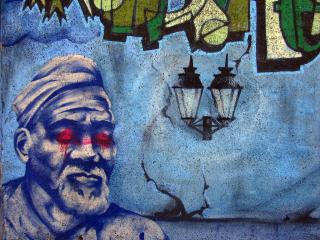Paul Collier‘s slim and informative volume is true to my recollection of the man from Oxford. The Bottom Billion: Why the Poorest Countries are Failing and What Can Be Done About It is engaging, concise, and powerfully argued. It is also unsparing in its criticism. Collier explains that the ‘developing world’ consists of two groups of states: those experiencing sustained growth and thus seeing their standard of living converging with those in the rich world and those that are ‘stuck’ in poverty, with stagnant growth or absolute decline.
Poverty traps
The ‘stuck’ states – where the world’s poorest billion inhabitants are concentrated – are trapped in one of four ways: by conflict, natural resources, being landlocked with bad neighbours, and by bad governance. States can be trapped in more than one simultaneously and, even when they escape, there are systemic reasons for which they are unusually likely to fall back into one. The discussion of the traps is particularly informative because of how quantitative methods have been used in support of anecdotal arguments.
Not only are ‘bottom billion’ states unusually likely to suffer from conflict, corruption, and similar problems, but some of the most important paths to growth used by states that have already escaped poverty are closed to them. To grow through the export of manufactured goods, you need both low wages and economies of scale. Even if wages in Ghana are lower than those in China, China has the infrastructure and the attention of investors. The presence of export-driven Asian economies makes it harder for ‘bottom billion’ states to get on a path to development.
Solutions
Collier’s proposed solutions include aid, military intervention, changes to domestic and international laws and norms, and changes to trade policy. Much of it is familiar to those who have followed development debates: the problems with agricultural tariffs, the way aid is often used to serve domestic interests rather than poverty reduction, corruption within extractive industries, and the like. His most interesting ideas are the five international ‘charters’ he proposes. These would establish norms of best practice in relation to natural resource revenues, democracy, budget transparency, postconflict situations, and investment. Examining them in detail exceeds what can be written here, but it is fair to say that his suggestions are novel and well argued. He also proposes that ‘bottom billion’ states should see import tariffs in rich states immediately removed for their benefit. This is meant to give them a chance of getting onto the path of manufacture-led growth, despite the current advantages of fast-growing Asian states. His idea that states that meet standards of transparency and democracy should be given international guarantees against being overthrown in coups is also a novel and interesting one.
Position in the development debate
Collier’s book is partly a response to Jeffrey Sachs’ much discussed The End of Poverty: Economic Possibilities for Our Time. Sachs pays much more attention to disease and has more faith in the power of foreign aid, but the two analyses are not really contradictory. Together, they help to define a debate that should be raging within the international development community.
Collier’s treatment is surprisingly comprehensive for such a modest volume, covering everything from coups to domestic capital flight in 200 pages. The approach taken is very quantitatively oriented, backing up assertions through the use of statistical methods that are described but not comprehensively laid out. Those wanting to really evaluate his methodology should read the papers cited in an appendix. Several are linked on his website.
Environmental issues
Environmental issues receive scant attention in this analysis. When mentioned, they are mostly derided as distractions from the real task of poverty reduction. It is fair enough to say that environmental sustainability is less of a priority than alleviating extreme poverty within these states. That said, the environment is one area where his assertion that the poverty in some parts of the world is not the product of the affluence in others is most dubious. It is likely to become even more so in the near future, not least because of water scarcity and climate change.
Climate change receives only a single, peripheral mention. This is probably appropriate. Surely, the effects of climate change will make it harder to escape the traps that Collier describes. That doesn’t really change his analysis of them or the validity of his prescriptions. The best bet for very poor states is to grow to the point where they have a greater capacity to adapt and will be less vulnerable to whatever the future will bring.




